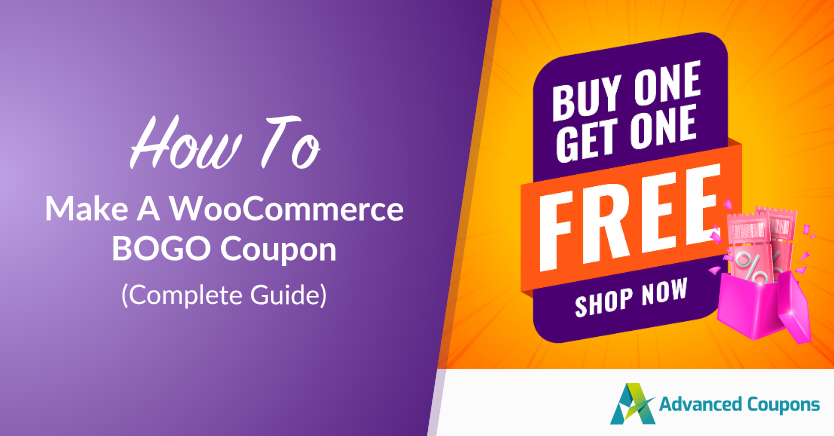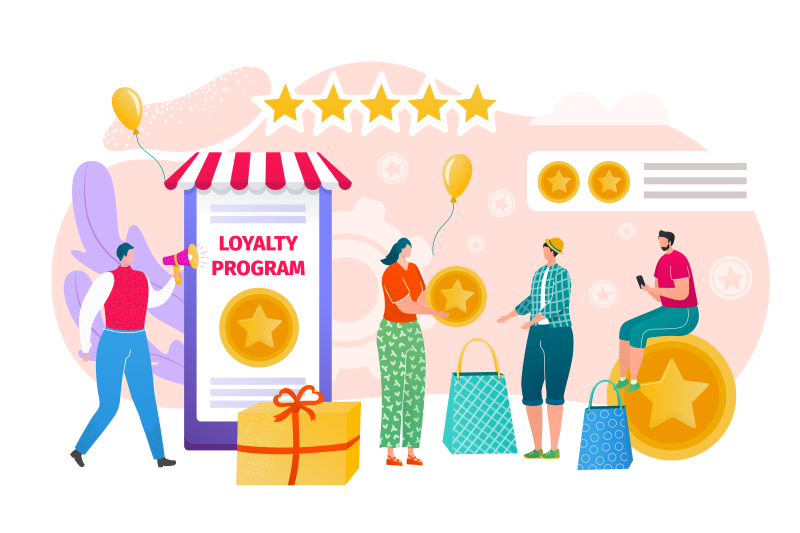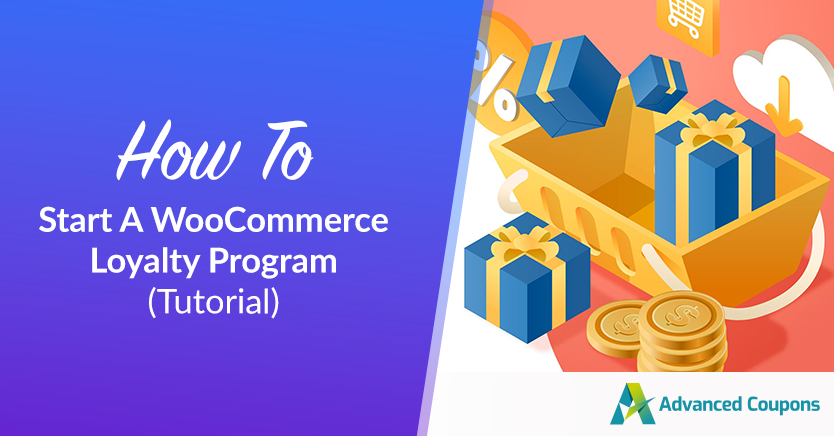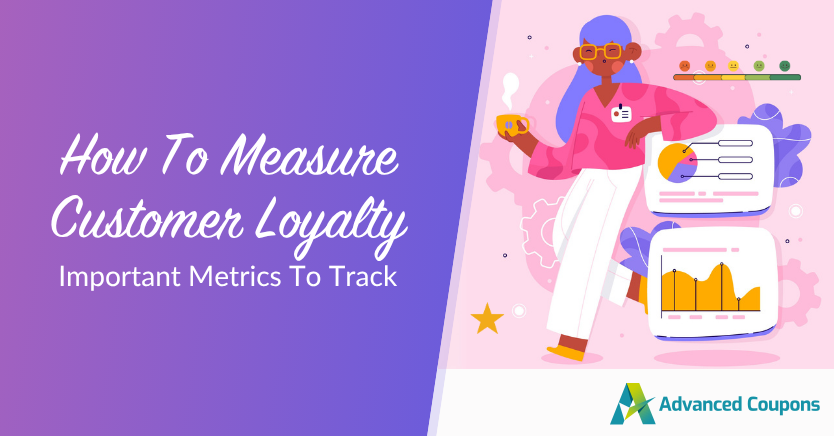
All businesses aim to build a customer base that’s loyal, engaged, and profitable. And yet, only a few take the time to track how loyal their customers are. In fact, according to industry insights, 44% of businesses don’t know their customer retention rate. Learning how to measure customer loyalty can be the difference between merely guessing what works and nurturing a loyal customer base that keeps coming back.
In this guide, we cover the most important customer loyalty metrics that will help you track performance and make smarter decisions. What’s more, we’ll share actionable strategies you can implement using smart tools to strengthen loyalty over time.
Let’s get into it!
What Is Customer Loyalty?
Customer loyalty happens when shoppers consistently choose your store over time. Even if there are cheaper alternatives or more convenient options out there, they choose your business over competitors again and again.
More often than not, customers stay loyal not just because of what you offer, but because of the experience they associate with it. This includes how they feel when shopping with you, how seamless the process is, and how appreciated they are even after the sale.
It’s not something that’s built overnight—it’s created through great service, great value, and meaningful incentives that make shoppers feel appreciated.
When done right, customer loyalty plays a big role in your store’s long-term success and sustainability.
Why Measure Customer Loyalty?
You can’t improve what you don’t measure. By tracking customer loyalty, you get a clearer view of what’s working and what’s not—it can reveal patterns, spot opportunities, and point out room for improvement that can help you make smarter business decisions.
Here are just some of the benefits of tracking customer loyalty metrics:
- Helps optimize marketing efforts: Measuring customer loyalty helps you understand the marketing strategies that are actually driving results, whether that’s loyalty points, free shipping incentives, or exclusive coupons.
- Reveals high-value shoppers: Tracking customer loyalty can also help you identify your best customers. They’re the ones who bring the most value to your business–they spend more and engage actively with your brand. Knowing who they are will help you personalize offers to deepen their relationship with your brand.
- Helps build better customer experiences: Customer loyalty metrics like churn rate and Net Promoter Score (NPS) can reveal friction points in your shopping journey. This is crucial data in improving your overall shopping experience to keep customers satisfied.
- Supports your business’s long-term growth: When you understand how loyal your shoppers are, you’ll be able to better forecast future revenue, plan better promotions, and make changes to support your growth.
- Unlock better reward strategies: Loyalty data can help you design reward systems that truly resonate with the needs of your audience. For instance, if you notice that your best customers tend to place fewer but larger orders, you can offer loyalty perks based on minimum spend to reinforce the behavior.
How To Measure Customer Loyalty (6 Important Metrics)
Now that we understand why it’s crucial to measure customer loyalty, let’s dive into the how of it. Below, we go through six key customer loyalty metrics—each of them provides helpful insights into how customers interact with your store and where you can improve to keep them coming back.
1. Customer retention rate
Customer retention rate is one of the biggest indicators of customer loyalty. It measures how many shoppers stay with your business over a specific period of time. If you have a high customer retention rate, chances are shoppers find value in your products, service, or the overall shopping experience you provide.
On the flip side, a low customer retention rate might indicate product quality issues, friction during checkout, or a lack of post-purchase engagement. Here’s how to measure it:
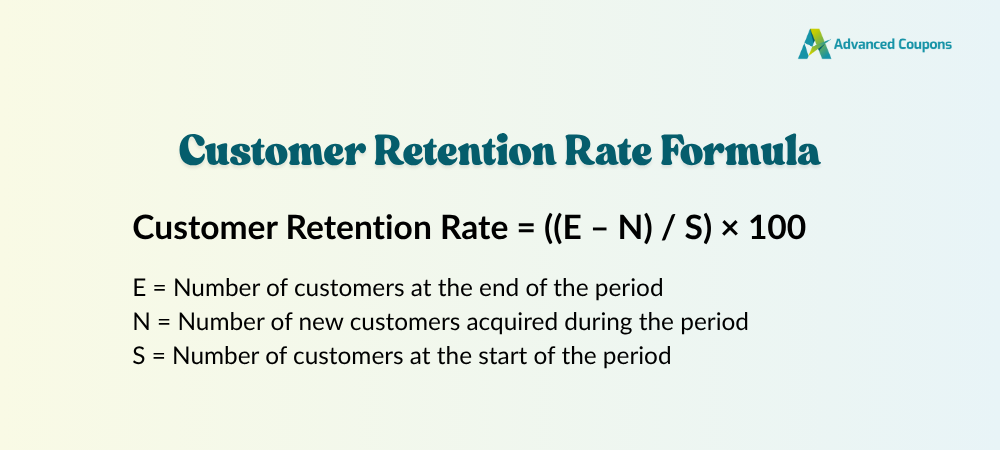
🎯 POWER TIP: Post-purchase offers can help you boost customer retention. With plugins like Advanced Coupons, you can offer store credit and exclusive discounts to reward customers for coming back.
2. Customer lifetime value
If we’re talking about how to measure customer loyalty, then we’d have to add Customer Lifetime Value (CLV) to the list. This metric reveals how much revenue you can expect from a shopper throughout their entire relationship with your brand.
Shoppers with a higher CLV mean they’re coming back, spending more, and engaging consistently with your business. Therefore: the higher your CLV, the more profitable your business becomes.
Here’s how to calculate CLV:
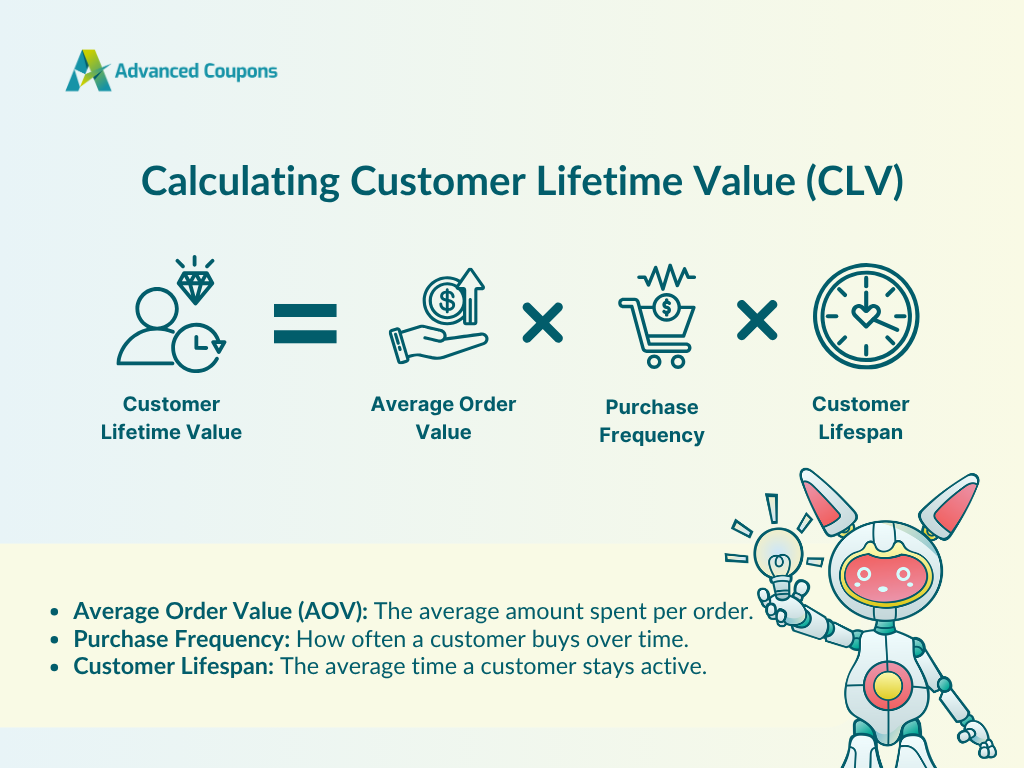
click to zoom
If you’re interested in learning how to increase CLV for your business, check out our complete guide here! 👉
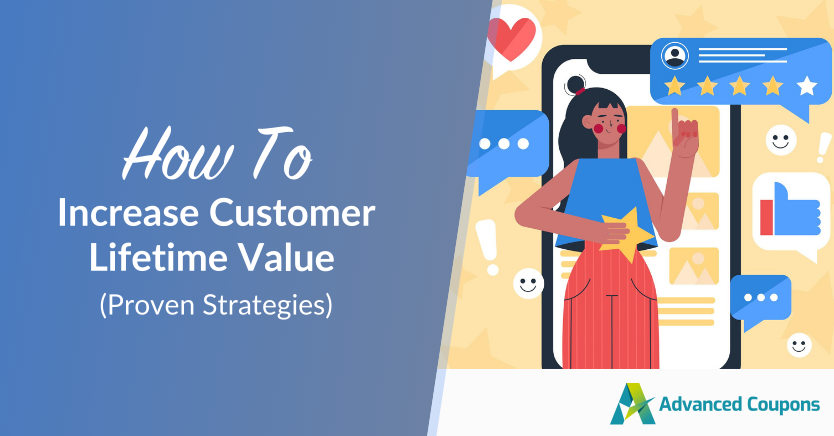
3. Net promoter score (NPS)
Net Promoter Score (NPS) measures how likely customers are to recommend your store to others. To evaluate this, brands typically ask this simple question:
“On a scale of 0 to 10, how likely are you to recommend us to a friend or colleague?”
Take a look at this example from Kahoot!:
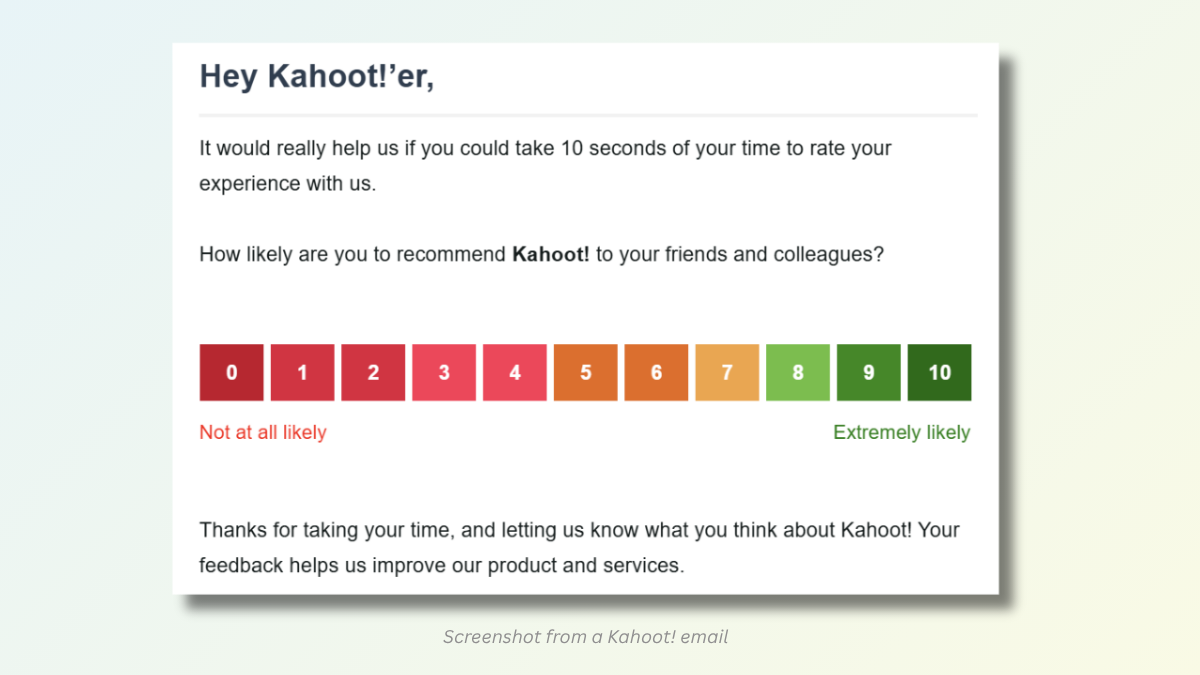
Shoppers who answer 9-10 are considered promoters—they love your brand and are likely to recommend you to others. Meanwhile, those who answered 0-6 are called detractors. These shoppers are dissatisfied and might discourage others from buying from your store.
Here’s a simple formula to calculate NPS:
NPS = % of Promoters – % of Detractors
Your brand’s score can range from -100 to +100. Having a positive NPS means customers are having a great experience and are likely to recommend your store to others.
🎯 POWER TIP: Building lasting customer loyalty entails rewarding your superfans! Once you identify your promoters, don’t leave them hanging. With Advanced Coupons, you can create custom coupon URLs, send exclusive discount codes, or even reward top customers with gift cards as a thank-you.
4. Customer churn rate
Another important metric to consider when learning how to measure customer loyalty is the customer churn rate. This reveals how many shoppers you’re losing over a certain period of time. Here’s a simple formula to calculate it:
Having a higher churn rate can indicate a red flag, as you’re losing customers faster than keeping them. When this happens, it’s crucial to identify potential gaps in product quality, customer experience, or your brand’s post-purchase efforts.
5. Customer engagement
Your most engaged customers are likely your most loyal ones as well. They’re shoppers who don’t just buy from you, but are sincerely interested in what you have to say. That’s why higher engagement rates are often indicative of stronger customer loyalty.
Unlike most of the customer loyalty metrics we’ve covered in this guide, this one doesn’t have a set formula. What you track may differ depending on the marketing channels you use and how they interact with your brand. Here are the most common examples:
- Email open rates and click rates: Consistently high email open rates and click rates indicate that they love hearing from your brand and learning about your offers.
- Social media shares, comments, or mentions: Social media engagement means shoppers are talking about your brand and connecting with your content.
- Coupon redemption rates: This metric reveals the effectiveness of your promotions. If more customers are redeeming your coupons, then they likely resonate with your offers.
- Loyalty program engagement: Are customers redeeming their loyalty points and claiming their rewards? Strong participation in your loyalty program reflects ongoing interest and trust in your brand.
💡GOOD TO KNOW: If you use plugins like Advanced Coupons, you gain access to a comprehensive dashboard that summarizes coupon performance, loyalty point activity, and store credit usage. These insights will help you analyze engagement trends over time and guide your marketing efforts.
6. Referral rate
How often customers bring other shoppers to your store is a strong indicator of loyalty. After all, only happy, satisfied customers are more likely to spread the word about your brand. That’s what referral rate measures, and it can be calculated using this simple formula:
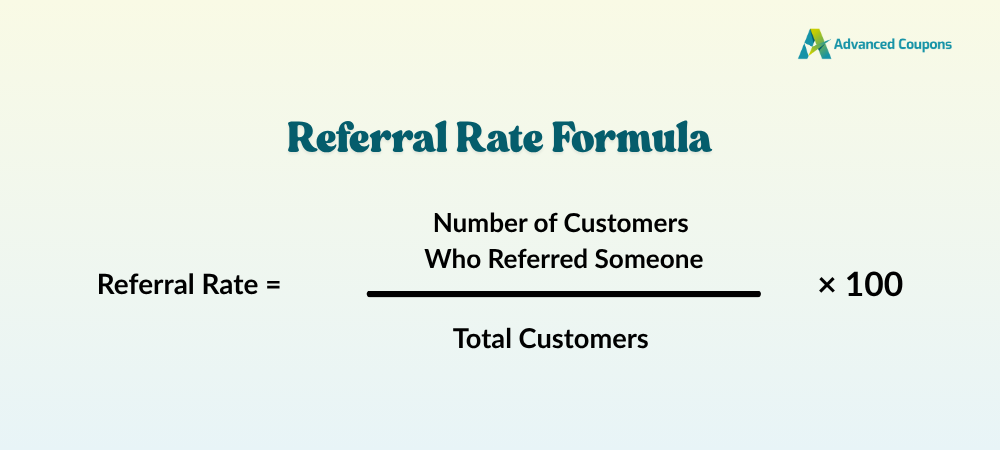
click to zoom
This specific formula reveals the percentage of shoppers who actively refer others to your store. You can track this manually or through referral tools, affiliate plugins, or loyalty programs that reward sharing.
💡GOOD TO KNOW: WooCommerce Loyalty Program allows store owners to reward referrals with loyalty points. It’s an easy way to encourage more referrals and thank your biggest brand advocates.
How To Improve Customer Loyalty With Advanced Coupons
Learning how to measure customer loyalty is step one. Step two is taking actual steps to improve it! Thankfully, powerful tools like Advanced Coupons make this endeavor simple, scalable, and effective for WooCommerce store owners.
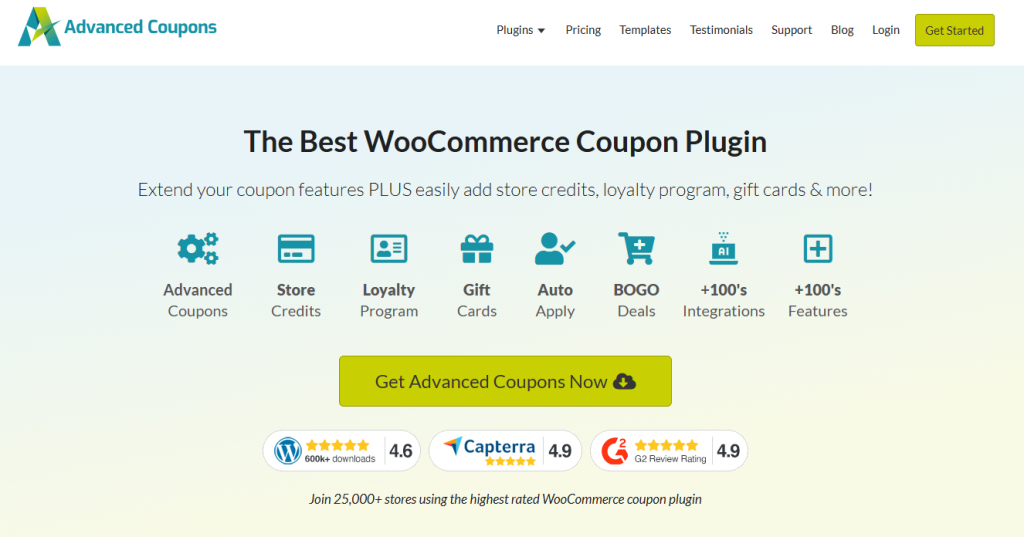
Here are just a few ways you can use Advanced Coupons to build lasting loyalty:
- Offer flexible coupon promotions: This powerful plugin allows you to offer advanced deals like BOGO, shipping discounts, URL coupons, and auto-applied incentives. You can customize each deal with advanced cart conditions and restrictions to reward your most valued shoppers.
- Use store credit as a customer retention tool: Advanced Coupons lets you launch a free store credit system right within WooCommerce. You can use it to improve your store’s refund policy, offer loyalty bonuses, or give re-engagement incentives!
- Launch a points-based loyalty program: With WooCommerce Loyalty Program, you can easily set up a rewards points system in WooCommerce in a few clicks. Reward shopper actions like leaving a review, signing up as a customer, referring a friend, and more.
- Sell digital gift cards: With WooCommerce Gift Cards, customers can buy or receive gift cards from your store. They make amazing gifts (especially during the holidays), increase brand awareness and encourage product discovery among new customers.
Want to learn more? Check out our detailed tutorials below:
Frequently Asked Questions
How do you measure customer loyalty?
You can measure customer loyalty through key metrics like Net Promoter Score (NPS), customer retention rate, customer lifetime value (CLV), engagement rates, and churn rate. These metrics are indicators of how often customers return to your brand, how likely they are to refer you to others, and whether they’re satisfied with your products, services, and overall shopping experience.
How to identify a loyal customer?
Loyal customers engage more actively with your brand, spend more, purchase repeatedly, participate in your rewards program, and refer their friends to your store. Plugins like Advanced Coupons give you insights about who your most loyal customers are by offering a comprehensive dashboard that summarizes coupon redemption and loyalty program usage.
How can you ensure customer loyalty?
Store owners can build lasting loyalty over time by offering high-quality products, delivering stellar customer service, offering incentives, and creating a smooth overall shopping experience. It’s not an endeavor a business can achieve overnight, but consistent efforts to improve customer experience can help. Tools like Advanced Coupons make it easier by letting you reward customers with personalized incentives, loyalty points, and exclusive promotions.
Conclusion
Learning how to measure customer loyalty is one of the smartest moves you can make as a business owner. Doing so will give you access to invaluable insights about what’s currently working, where to improve, and how to build deeper customer relationships.
In this guide, we walked you through the essential basics, including:
- What customer loyalty means
- Why learn how to measure customer loyalty
- The most important customer loyalty metrics to track
- Practical ways to improve loyalty using Advanced Coupons
Building lasting customer loyalty doesn’t happen overnight, but consistent efforts to build better customer experiences stack up over time. With Advanced Coupons, creating rewarding and personalized loyalty strategies becomes easier and more attainable than ever.
Do you have any questions about this topic? We’d love to hear from you!

